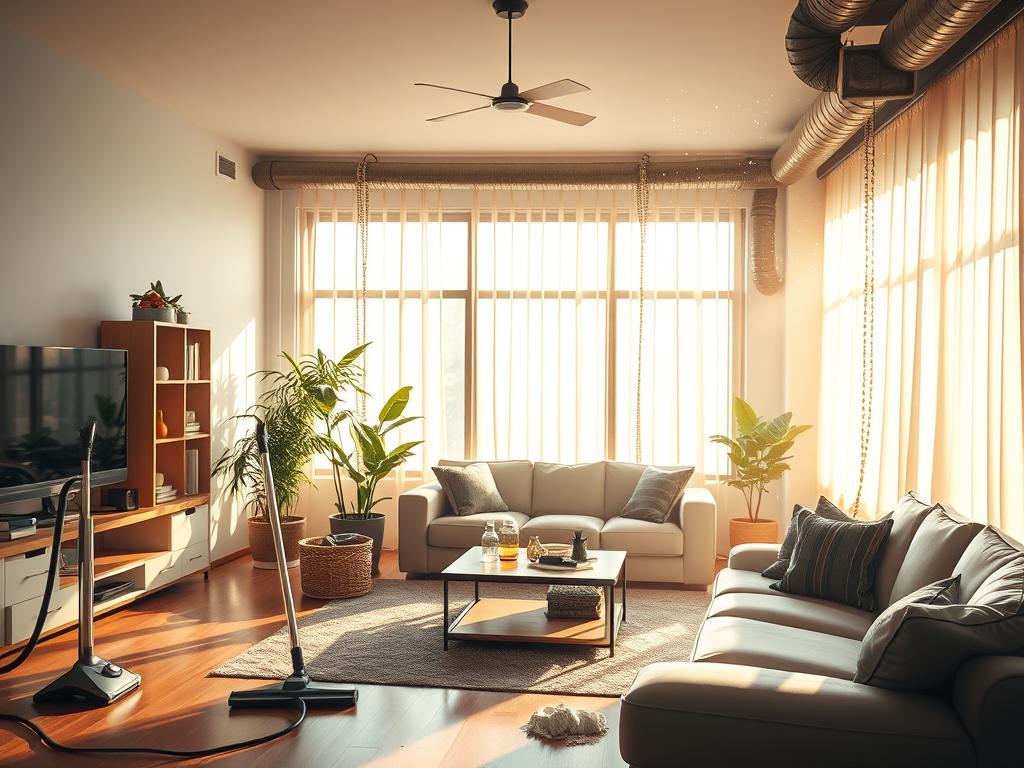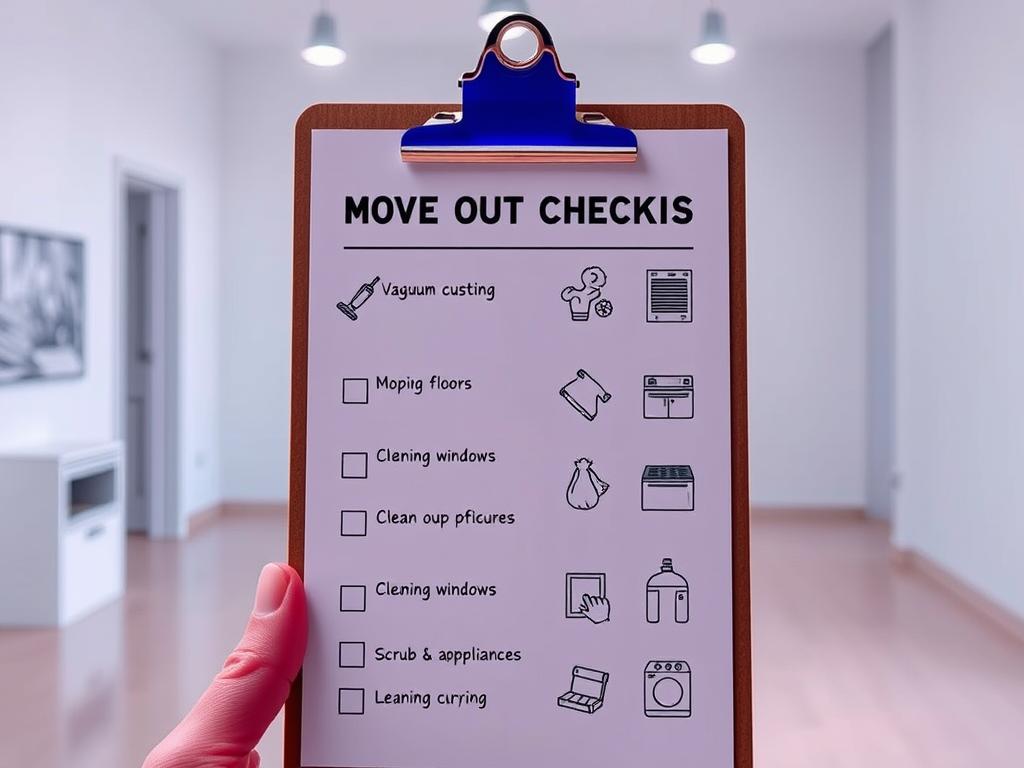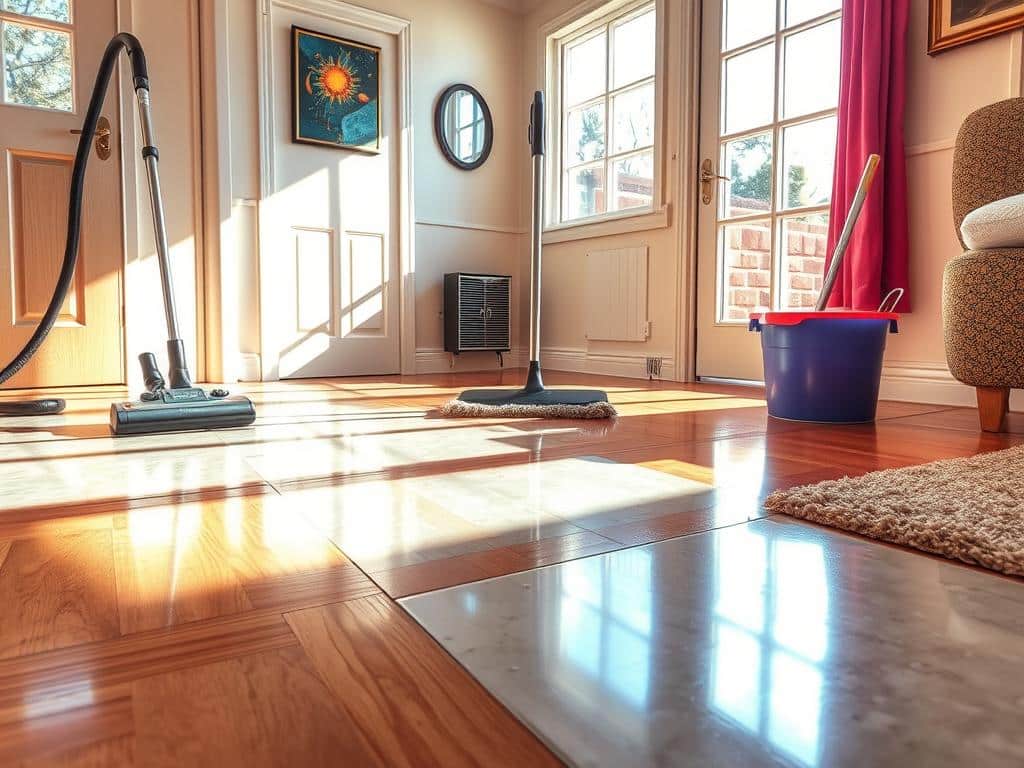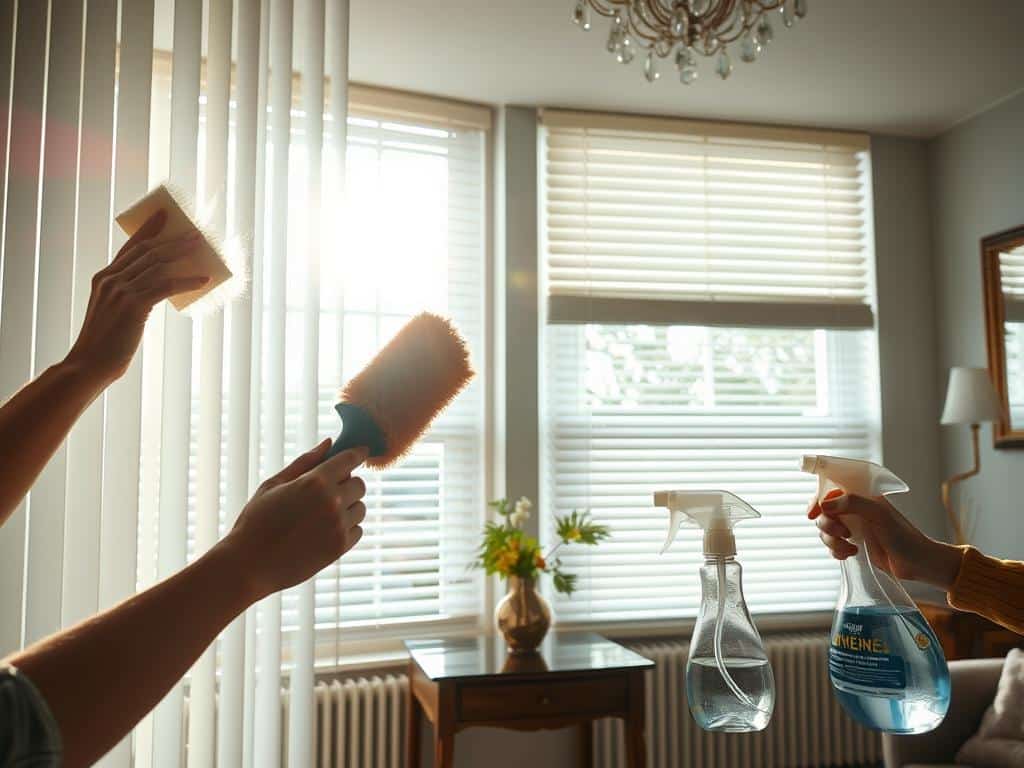
Dust and debris can make blinds look dirty and lessen the cleanliness of your home. This issue can also spread allergens, like dust and dander, when you adjust the blinds. To keep your home looking good and reduce dust, learn how to clean your blinds the right way.
To keep your home dust-free, it’s smart to clean blinds every week or two. This stops thick dust from building up. Doing a deep clean once or twice a year will keep your blinds in top shape. This not only makes your space look better but also helps control indoor allergies.
If your blinds have turned yellow, try using bleach. Spray it on a cloth and wipe each slat carefully. Dryer sheets can reduce static and keep dust away. For dirty blind cords, use a cloth with soapy water to spot clean them.
Using these cleaning tips and a routine schedule can make your home healthier and more inviting. To learn more about deep cleaning, like air duct cleaning, check out more advice and steps here.
Why Deep Cleaning Blinds is Important
Neglecting your blinds can cause issues. Dust and fine debris can build up, leading to discoloration. This makes your home look less inviting. When you move dirty blinds, dust spreads in the room. It worsens air quality and can make allergies bad. This shows why it’s vital to keep your home clean for reducing indoor allergies. Learn more about keeping your home clean at The Clean Haven.
Regular cleaning is key to avoiding these problems. Cleaning blinds every week or two is advised to stop dust buildup. This keeps your home free of dust, improving air quality and lowering allergy risks. Tools like vacuum attachments and microfiber cloths make cleaning easier and more effective.
For a deeper clean, soak blinds in a bathtub with soap or vinegar. This method gets rid of tough dirt and helps your blinds last longer. Proper upkeep means you won’t have to replace blinds as often, perhaps every five to ten years.
By making these efforts, you help keep your blinds in good condition. This aids in creating a cleaner, healthier home. Cleaning your blinds isn’t just for looks. It plays a big part in enhancing air quality and reducing allergens. This makes your living space more enjoyable.
Supplies You Need for Cleaning Blinds
It’s important to get the right supplies for cleaning blinds. Different blinds need specific tools for safe cleaning. Having the right tools makes the cleaning easy and effective, whether it’s a quick dust-off or a major clean.
General Cleaning Supplies
- Vacuum with a handheld attachment
- Microfiber cloths
- Clean sock
- White vinegar
Vacuuming gently with a brush attachment lifts dust without harm. Microfiber cloths pick up dust well. A clean sock dampened with white vinegar can remove tough spots on plastic or metal blinds.
Deep Cleaning Supplies
- Screwdriver or power drill
- Dish soap
- Bathtub with warm water
- Clean cloth or sponge
- Microfiber cloth for drying or air drying
To give blinds a deep clean, start by taking them down. Using tools like a screwdriver makes it quick. Soak the blinds in warm, soapy water in the tub. Then, scrub with a cloth or sponge, rinse well, and dry. Use a microfiber cloth to dry or let them air dry to avoid water marks. This step is crucial for wooden blinds to prevent warping from moisture.
Deep Cleaning Blinds
Deep cleaning blinds should happen once or twice a year. It improves their look and makes them last longer. This process, done right, ensures your blinds won’t get damaged.
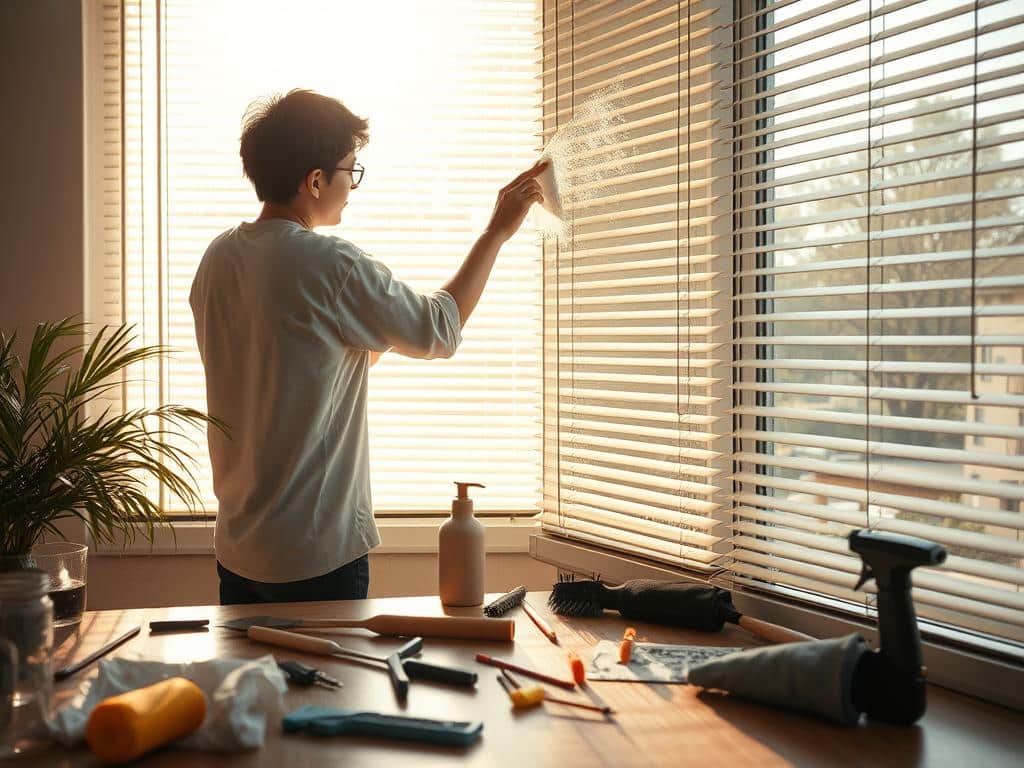
Steps to Deep Clean
Follow these steps for a thorough clean:
- Preparation: Remove the blinds with a drill or screwdriver. Place a towel in the tub to avoid scratches. This makes cleaning smooth.
- Soak: Add warm, sudsy water to the tub. Dunk the blinds in it for 20-30 minutes. Dirt and grime will loosen up.
- Wipe Down: Scrub each slat gently with a cloth or sponge; focus on dirty spots. This step is key to cleaning them well.
- Rinse: Rinse the blinds with fresh water to wash off soap. This step is vital for keeping them well-maintained.
- Dry: Use a soft cloth to dry them, or air dry fully before hanging them back up. Keep windows shut to keep pollen out.
This approach helps keep your blinds clean and your home looking great.
Best Methods for Cleaning Blinds Without Taking Them Down
Cleaning blinds without removing them saves you time. With simple cleaning methods, you can keep your home healthy. In this guide, we’ll share the best ways to clean blinds right where they are.
Regular Maintenance
Keeping blinds clean is essential to control dust. You can use microfiber cloths, a vacuum with a dust brush, or Swiffer dusters. This helps keep your blinds looking great without removing them.
Having a cleaning schedule prevents dust from building up. This makes it easier to keep your blinds clean over time.
- Microfiber Cloths: A quick wipe with a microfiber cloth captures dust well. This helps keep your blinds clean.
- Vacuum with Brush Attachment: A vacuum with a brush attachment removes dust and small particles efficiently.
- Swiffer Dusters: These tools work well for cleaning between slats. They’re perfect for cleaning blinds on the window.
Make these cleaning methods part of your weekly routine. For a deeper clean, try cleaning more thoroughly every few months. This is especially useful when seasons change. Remember not to wet wooden blinds; just dust them dry. Regular care keeps your blinds looking beautiful and makes them last longer.
How to Clean Different Types of Blinds
Cleaning your blinds the right way is key. Each type needs material-specific blind care. This keeps them looking good and lasting longer. Let’s dive into caring for wood, vinyl and aluminum, and fabric blinds. We’ll also talk about protecting window treatments.
Wood Blinds
Wood blinds bring beauty but need careful handling. Too much water damages them, so use a dry or barely wet cloth. Vacuuming them weekly cuts down on dust.
If you spot a stain, gently dab it with a mild detergent and a damp cloth. Always dry the blinds well afterward. This stops water damage.
Vinyl and Aluminum Blinds
Vinyl and aluminum blinds are tough. They can handle stronger cleaners. Start by straightening the slats and vacuuming with a brush attachment.
Every couple of months, wash them in a bath with warm water and mild soap. Make sure to rinse and dry fully before hanging. This stops mold. A quick dust with a feather duster keeps them tidy.
Fabric Blinds
Fabric blinds need a gentle touch to avoid water damage and smells. A vacuum with a brush attachment is best for dusting. For spots, lightly use a baby wipe or a sponge with a bit of detergent.
Be careful not to soak the fabric. If really dirty, try a fabric stain remover with caution. It might change the color a bit.
Maintaining Blinds to Keep Them Clean Longer
Keeping your blinds clean means regular blind upkeep and dust prevention strategies. Dusting often keeps away dust and allergens. This keeps window coverings looking good. Make sure to clean them as the maker suggests, since different materials need different care.
Use handheld dusters, microfiber cloths, or clean gloves for dusting. For hard-to-reach spots, try a natural fiber paintbrush or a dry toothbrush. Fabric window shades and vertical blinds also need regular dusting to stay clean.
To clean fabric shades, use canned air, vacuum with a low setting, or microfiber cloths. Spot clean with a damp sponge and warm water. Make sure they dry completely. Draperies and curtains have their own cleaning needs, like dry or steam cleaning to prevent damage.
Regularly vacuuming wood, metal, or plastic blinds cuts down on dust. Although cleaning them weekly is great, give them a deeper clean every two months. If you have pets or cook often, monthly cleaning might be needed. Handheld vacuums with HEPA filters catch more dust.
Don’t soak fabric blinds in water. However, aluminum or plastic blinds can be washed in soapy water. Clean wood and faux wood blinds with a sock dipped in soapy water. Dryer sheets after cleaning can help keep dust off.
Don’t use wood spray cleaners on wood blinds; they can get sticky. Blowing dry hard-to-reach spots on cool helps too. For more cleaning tips, check out this expert guide. It will help you keep your window treatments looking their best.
Conclusion
Keeping blinds clean is key for a nice and less dusty house. By learning simple ways to clean them often and deeply, you can make your blinds look new. This helps keep your home clean and comfy. Regular cleaning keeps blinds good, making your place look better and more welcoming.
Different blinds like wood, vinyl, aluminum, and fabric need special cleaning ways. Real wood blinds need to be cleaned deeply every month with special products because they can get damaged by water. Faux wood blinds, which last longer and don’t get damaged by water easily, can be cleaned with just a mild soap. Dusting every week is important for both types to stop dust from collecting and to make them last longer.
Fabric blinds and vertical ones need to be cleaned carefully with things like canned air or a vacuum attachment. Doing a light cleaning with a damp cloth or checking the fabric for color bleeding before cleaning with water makes sure the material stays good. For thick curtains, using a steamer can take away dust well. Doing regular light cleanings or sometimes a deep clean helps blinds last longer and keeps your home fresh.
Being proactive with cleaning blinds, including doing deep cleans when needed and keeping up with regular cleaning, makes a home more welcoming and clean. For more about how clean blinds make a home healthier, check out this link.

